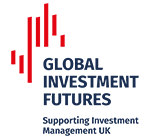Embedding stewardship in the asset manager and asset owner relationship
New recommendations have today been set out to strengthen the relationship between pension funds and investment managers, who together are responsible for £4trn of institutional assets and provide income in retirement to millions of people in the UK.
The report, by a steering group of investment managers, pension funds, investment consultants and lawyers established jointly by the Investment Association (IA) and Pensions and Lifetime Savings Association (PLSA), aims to embed stewardship into the relationship between investment managers and pension funds.
It sets out several recommendations for each stage of the relationship between investment managers and asset owners from the appointment process right through the ongoing monitoring of established relationships, in order to help deliver better returns for savers. The report seeks to tackle issues such as: a lack of clarity on stewardship expectations, and an overemphasis on short-term performance, and not taking enough account of the stewardship outcomes which risk undermining longer-term sustainable growth.
The report, ‘Investment relationships for sustainable value creation: Alignment between asset owners and investment managers’ includes the following recommendations:
- Greater clarity and articulation of stewardship expectations during the manager appointment process. Pensions funds should clearly articulate their stewardship policies and investment managers should set out the stewardship approach for their fund through the appointment process, with pension funds being clear how the manager’s approach to stewardship will be incorporated into their appointment decision.
- Investment consultants should be clear how they support the incorporation of stewardship into the assessment process.
- A ‘governing charter’ setting out mutual expectations on the promotion of long-term sustainable value should be established. This charter should cover mutual expectations on the promotion of long-term, sustainable value through:
- The expected minimum duration of the relationship;
- Performance reviews;
- Ongoing dialogue, communication and disclosures, including how to facilitate client voice;
- Responsibilities to the market and management of systemic risks;
- Culture and governance; and
- Ongoing alignment of stewardship policies.
- An oversight framework should be agreed between asset owners and investment managers which aligns the performance review cycle, the investment and stewardship objectives, and the key performance indicators.
Richard Butcher, co-chair of the steering group, and Managing Director at PTL said:
“Stewardship is essential to building long-term value. Pension trustees and other long-term investors will not succeed in their ESG, climate and sustainability objectives unless they get stewardship right. And they cannot be passive about this. The market has different objectives to long-term investors - not least in its time horizon. Despite this, getting good stewardship to work consistently throughout the investment chain is really difficult. The recommendations we have set out in our paper are designed to make the process easier and more robust - but their success depends on all parts of the investment chain leaning in. Together they and we can build more sustainable investment relationships to the benefit of savers across the country.”
Archie Struthers, co-chair of the steering group, and independent investment management expert, said:
“Both asset owners and investment managers are facing unprecedented challenges in supporting the economy to transition to net zero. True collaboration, with a clear focus on sustainable value will be essential to navigate these challenges going forward. These recommendations help to focus on the practical steps which can be taken at each stage of the relationship from pre-appointment to ongoing oversight. Our goal with this report is to affect an intervention, as the end-to-end investment process can be much improved by all parties leaning in to work more effectively with each other on an ongoing basis, to the benefit of our collective beneficiaries.”
The report follows the Asset Management Taskforce tasking the IA and the PLSA to bring together the pensions and investments industries towards a common goal – to embed stewardship in the relationship between asset owners and investment managers.
The IA and PLSA set up the joint steering group in 2021, which focused on finding solutions for how the relationship between asset owners and investment managers could be governed in a way that promotes a long-term focus and aligns stewardship expectations.
ENDS
The full report: Investment relationships for sustainable value creation: Alignment between asset owners and investment managers can be found here.
For further information, please contact:
Katie Martin, Head of Communications: [email protected]
T: +44 (0)20 7269 4655
IA press office: [email protected]
T: 020 7269 4696
About the Investment Association (IA):
- The IA champions UK investment management, supporting British savers, investors and businesses. Our 270 members manage £9.4 trillion of assets and the investment management industry supports 114,000 jobs across the UK.
- Our mission is to make investment better. Better for clients, so they achieve their financial goals. Better for companies, so they get the capital they need to grow. And better for the economy, so everyone prospers.
- Our purpose is to ensure investment managers are in the best possible position to:
- Build people’s resilience to financial adversity
- Help people achieve their financial aspirations
- Enable people to maintain a decent standard of living as they grow older
- Contribute to economic growth through the efficient allocation of capital.
- The money our members manage is in a wide variety of investment vehicles including authorised investment funds, pension funds and stocks and shares ISAs.
- The UK is the second largest investment management centre in the world, after the US and manages over a third (37%) of all assets managed in Europe.






